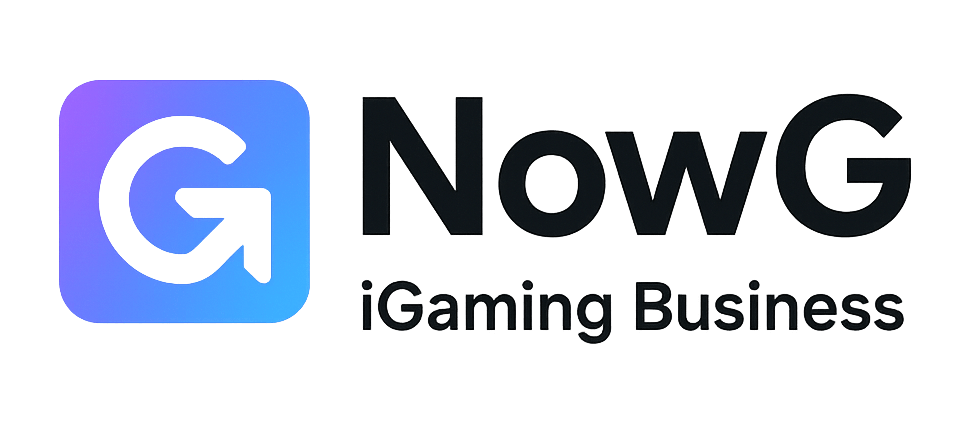What if the reason your reps miss high-value prospects is not effort, but how you route incoming interest?
I rely on fast routing and automation to cut manual assignment time and boost revenue. High-value contacts fall off when handoffs lag, and I’ve seen tools that capture, enrich, qualify, and route reduce dropoff dramatically.

In this guide, I preview the best picks across free and paid tiers so you can pick a stack or an all-in-one platform quickly. I’ll show which features move the needle for my sales teams — rules-based routing, availability-aware assignment, automatic scheduling, and real-time enrichment.
I also call out hidden fees and per-user costs from vendors like Chili Piper and Apollo.io so you avoid surprises. Read on to see which tools save time, raise contact rates, and turn faster follow-up into measurable revenue gains.
What I Mean by Automated Lead Distribution Software in 2025
In 2025 I define automated lead handling as a system that instantly moves a new contact from any source—form, chat, or trial—into my CRM and assigns ownership with zero manual steps.
The platform should apply rules for location, rep expertise, and availability, then route contacts via round-robin or weighted assignment. Fast syncing matters: HBR-style timing shows contact rates collapse in minutes, so seconds count.
Beyond initial routing, I expect automation for scheduling, reminders, and follow-ups so engagement doesn’t drop if a rep misses the first touch. Clean data and reporting on assignment outcomes let me track conversion rates and spot where the process is leaking.
- Capture integrations from every source and real-time CRM sync.
- Rules-based routing that respects geography, skills, and on-call status.
- Ownership signals, acceptance timeouts, and automatic fallback flows.
- Model rules without code, refine workflows mid-month, and keep data intact.
Put simply, the best distribution software saves time, raises reach rates, and tightens handoffs by closing the loop between capture, routing, scheduling, and CRM updates.
My Criteria for Choosing the Best lead distribution software
I measure distribution platforms by real-world criteria: sync speed, routing flexibility, and clear audit trails.
Fast syncing is non-negotiable — if a new lead doesn’t hit my CRM and queue within seconds, my five-minute callback rule breaks. I test round-robin and rules-based routing for territory, account ownership, and availability so matching happens automatically.
I need an intuitive workflow builder that a non-technical user can edit, plus assignment logs that explain why a contact went to a specific rep. Account matching and lead-to-account logic are critical for keeping ownership consistent.
- Automatic SLA timers, reminders, and escalation to cut management overhead.
- Tight CRM integrations and bidirectional updates; brittle workarounds drop my score.
- Advanced integrations (calendar, enrichment, chat) for unified data and fewer tools to glue.
- Reporting on flow by source, rule performance, rep metrics, and drop reasons.
I pilot any tool with a small team to validate UX, then weigh total cost of ownership before I commit to the best lead distribution option for my sales stack.
Top Automated Lead Distribution Tools You Should Consider Today
Picking the right routing and scheduling tool changes how fast my reps connect with prospects.
I prioritize an all-in-one platform when I want capture, enrichment, qualification, routing, scheduling, and follow-up without patchwork. That combo has delivered 67% faster speed-to-lead, twice the qualified inbound demos, and roughly 10 hours saved per week in my pilots.

Below are my notable picks, tidy pricing points, and where each tool fits in a sales stack.
| Tool | Core strength | Starter cost | Best for |
|---|---|---|---|
| Default (All-in-one) | Capture → enrich → schedule | Essential: 250 leads/mo, 5 seats | Teams needing end-to-end orchestration |
| Apollo.io | Data enrichment, filters | Free → Org $149/mo | Enrichment-heavy workflows |
| Calendly | Scheduling + basic routing | Team $16/seat/mo | Scheduling-first reps |
| Traction Complete | Salesforce any-object routing | Custom pricing | Salesforce-centric companies |
- I pick tools by mapping capabilities to my sources, location rules, and rep availability.
- Price modeling matters: per-user fees plus platform month charges can spike TCO fast.
Free vs Paid: How I Decide What’s Worth It
I weigh free tiers by what they actually let my reps do in the first five minutes after a signup. If a plan forces manual steps, response time slips and conversions drop fast.
Free and low-cost plans often restrict event types, routing rules, or integrations. Calendly’s Free tier limits event types; Apollo’s Free credits help enrichment but not full routing. Those gaps create workarounds that cost my team time each month.
| Vendor | User fee | Platform fee / month |
|---|---|---|
| Chili Piper | $30/user | $150–$1,000 |
| RevenueHero | $35–$49/user | $79 |
| LeadAngel | — | $99 (starter) |
- I list must-have features first: rules-based routing, availability-aware assignment, and scheduling.
- I model total cost (seats × month + platform fees + overages) before upgrading.
- I pilot free vs paid side-by-side and use the five-minute benchmark to measure impact.
- My rule: if a feature saves an hour per rep per week or recovers hot leads, I upgrade.
Ultimately, I choose lead distribution software when faster routing, cleaner data, and consistent response beat the sticker price.
The Features That Actually Move the Needle for My Sales Reps
Speed plus smart matching is the one change that consistently moves opportunity conversion for my team.
I insist on real-time syncing and instant lead routing that triggers in seconds. HBR-style data backs this: contacts are about 400% more likely to respond if called within five minutes, so time matters.
Rules-based logic must combine territory, account ownership, expertise, and availability. That matching removes manual checks and keeps reps focused on selling.
- Round-robin and weighted assignment to balance workload and seniority.
- Acceptance timers and automatic fallback to avoid stalled assignments.
- Built-in scheduling plus reminders to capture engagement at conversion.
- Account-based matching so known-company contacts go to the owner fast.
Clean reporting on conversion rates, acceptance times, and bottlenecks helps me iterate with data. Alerts in Slack or email cut manager overhead when volume spikes. Finally, audit trails and a usable UI keep rep trust high and misroutes rare.
Integrations That Keep My Data and Team in Sync
When systems sync cleanly, my reps spend more hours selling and fewer fixing records. I require native CRM integrations—Salesforce or HubSpot at minimum—so owners, fields, and activities flow without manual fixes.
I map workflows end-to-end: capture, enrichment, routing, and scheduling. Then I verify each integration point: forms, chat, calendar, and marketing automation. Zapier can bridge gaps for simple round-robin or random assignment, but I rely on native links for scale and reliability.

- I favor Salesforce-native tools (LeanData, Distribution Engine, Power Router) when my CRM must contain all assignment logic.
- Scheduling integrations with Calendly or SavvyCal must update CRM records and owner assignments automatically.
- I check write-backs, audit logs, sync frequency, and error alerts so every user can trace an assignment and fix issues fast.
| Stack | Common Use | Why I Test It |
|---|---|---|
| Salesforce + LeanData | Complex account-based routing | Assignment logic stays inside CRM |
| HubSpot + Chili Piper | Booking + route to rep | Simpler setup; good native calendar sync |
| Close + Zapier | Round-robin for SMB teams | Fast to deploy; watch for sync delays |
Before signing, I run a pilot with my team to validate that integrations keep records accurate, maintain workflows, and shorten the time to first touch. I also require platform health indicators and SLAs so I can diagnose routing issues quickly.
My Shortlist by Use Case
My shortlist starts with the use case, then I match features to real rep workflows. I focus on teams, volume, and the routing rules they need.
For Salesforce-first companies I pick LeanData or Distribution Engine. When I need drag-and-drop logic or acceptance timers inside CRM, Traction Complete or Power Router makes sense.
- SMBs: RevenueHero ($35–$49/user + $79/mo) plus Apollo and Calendly Team for quick wins.
- Complex B2B: LeanData or LeadAngel for account matching; Chili Piper if the budget supports platform fees.
- Field / high-volume: LeadSquared or Freshsales for localized routing and mobile CRM.
- Data-heavy ops: RingLead, Boberdoo, or LeadByte when cleanliness and scale matter.
| Use case | Tool | Why it fits |
|---|---|---|
| Salesforce-native | LeanData / Power Router | Embedded rules, account matching, audit trails |
| SMB budget | RevenueHero + Calendly | Low setup cost; fast adoption |
| High volume / field | LeadSquared | Location-aware routing; mobile CRM |
I always test with live leads to confirm expertise and location rules route as designed and that reps accept and act under peak loads.
How I Compare Plans, Seats, and Platform Fees Without Surprises
Budget math beats buzzwords: I start every vendor evaluation by building a true monthly total cost. I multiply seats by per-user rates, then add platform fees and any required add-ons. This gives me an apples-to-apples monthly and annual view.
I check whether routing features or assignments sit behind higher tiers. Tools like Chili Piper ($30/user/month + $150–$1,000/month platform fees) and RevenueHero ($35–$49/user/month + $79/month) often gate advanced rules. Calendly ranges from free to $16/seat/month with an Enterprise option.
- I review usage limits—credits, enrichments, events—and model overages against my inbound volume.
- I factor onboarding and integration time into total cost; time-to-value matters this quarter.
- I pilot with a small team to confirm conversion lifts justify the plan before scaling seats.
| Vendor | Per-user / month | Platform fee / month |
|---|---|---|
| Chili Piper | $30 | $150–$1,000 |
| RevenueHero | $35–$49 | $79 |
| Calendly | Free–$16 | Enterprise $15,000/yr |
Conclusion
The right routing mix turns fleeting interest into real pipeline without extra manual work.
Choose lead distribution software that guarantees fast routing, reliable scheduling, and clean data so your team hits peak engagement. All-in-one platforms cut drop and data loss; Default reported 67% faster speed-to-lead and doubled qualified inbound demos.
Use my criteria—speed, rules flexibility, account matching, auditability, and integrations—to spot tools that move revenue. Model total monthly cost (seats plus platform fees) before you buy, then pilot with your reps to measure response and conversion.
Automation that saves minutes per contact becomes meetings and then pipeline. Tight integrations and audit logs keep data honest and let you iterate with confidence.
.



